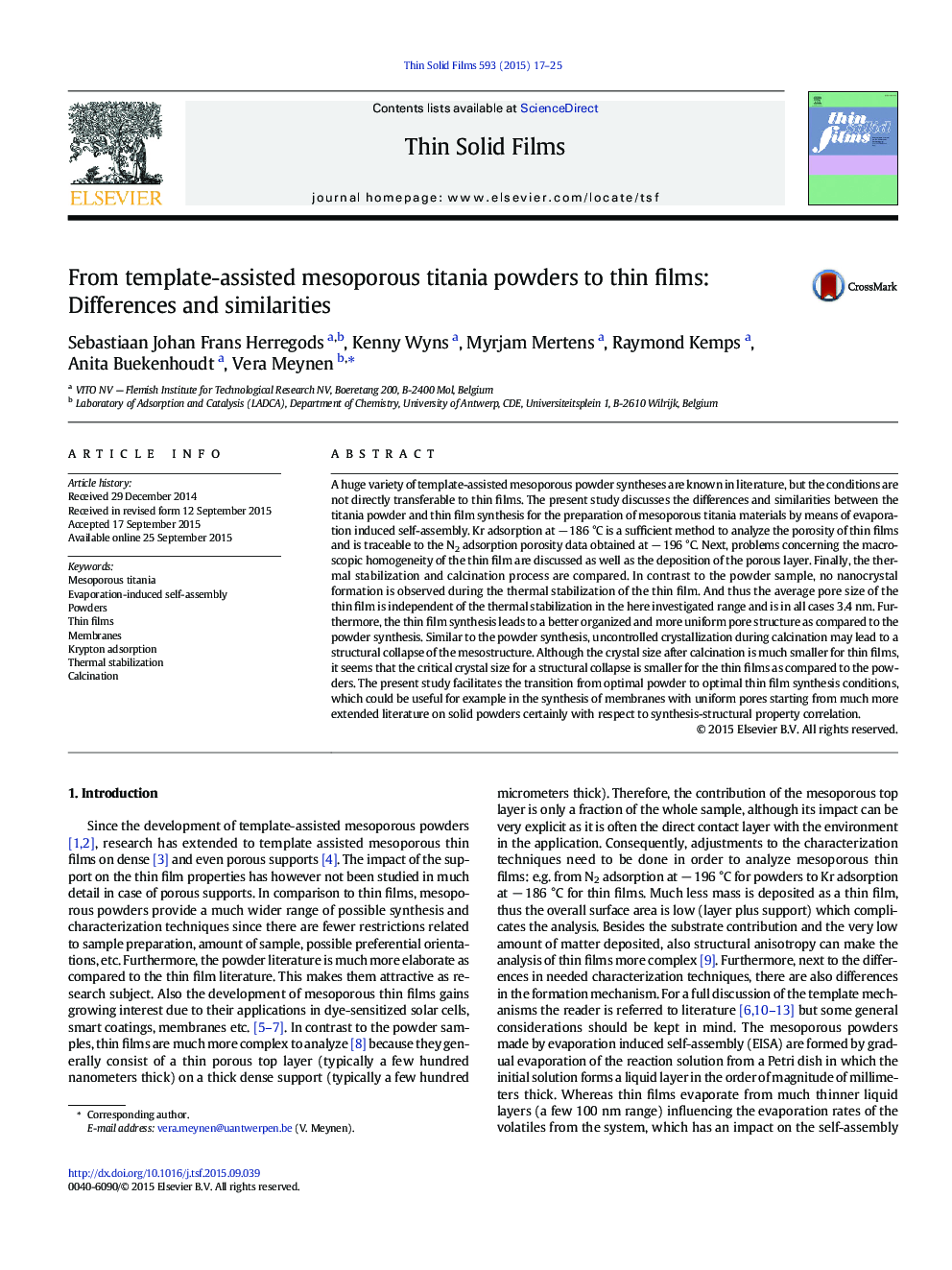| Article ID | Journal | Published Year | Pages | File Type |
|---|---|---|---|---|
| 1664323 | Thin Solid Films | 2015 | 9 Pages |
•Kr adsorption at − 186 °C is sufficient to analyze the porosity of TiO2 thin films.•The dipping speed has no influence on the pore size & uniformity of TiO2 thin films.•No nanocrystals are observed after thermal stabilization of TiO2 thin films.•TiO2 thin film synthesis leads to better organized & more uniform mesostructures.•Smaller critical crystal size for a pore collapse while calcining TiO2 thin films.
A huge variety of template-assisted mesoporous powder syntheses are known in literature, but the conditions are not directly transferable to thin films. The present study discusses the differences and similarities between the titania powder and thin film synthesis for the preparation of mesoporous titania materials by means of evaporation induced self-assembly. Kr adsorption at − 186 °C is a sufficient method to analyze the porosity of thin films and is traceable to the N2 adsorption porosity data obtained at − 196 °C. Next, problems concerning the macroscopic homogeneity of the thin film are discussed as well as the deposition of the porous layer. Finally, the thermal stabilization and calcination process are compared. In contrast to the powder sample, no nanocrystal formation is observed during the thermal stabilization of the thin film. And thus the average pore size of the thin film is independent of the thermal stabilization in the here investigated range and is in all cases 3.4 nm. Furthermore, the thin film synthesis leads to a better organized and more uniform pore structure as compared to the powder synthesis. Similar to the powder synthesis, uncontrolled crystallization during calcination may lead to a structural collapse of the mesostructure. Although the crystal size after calcination is much smaller for thin films, it seems that the critical crystal size for a structural collapse is smaller for the thin films as compared to the powders. The present study facilitates the transition from optimal powder to optimal thin film synthesis conditions, which could be useful for example in the synthesis of membranes with uniform pores starting from much more extended literature on solid powders certainly with respect to synthesis-structural property correlation.
